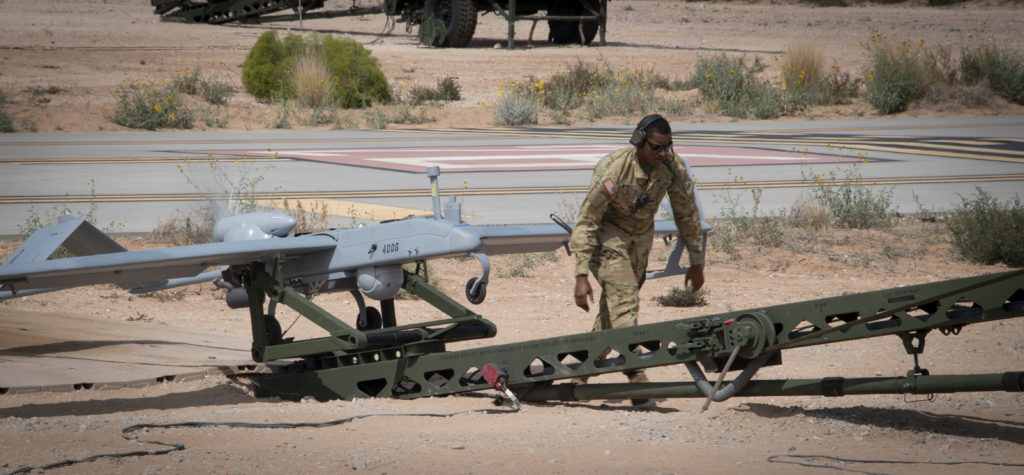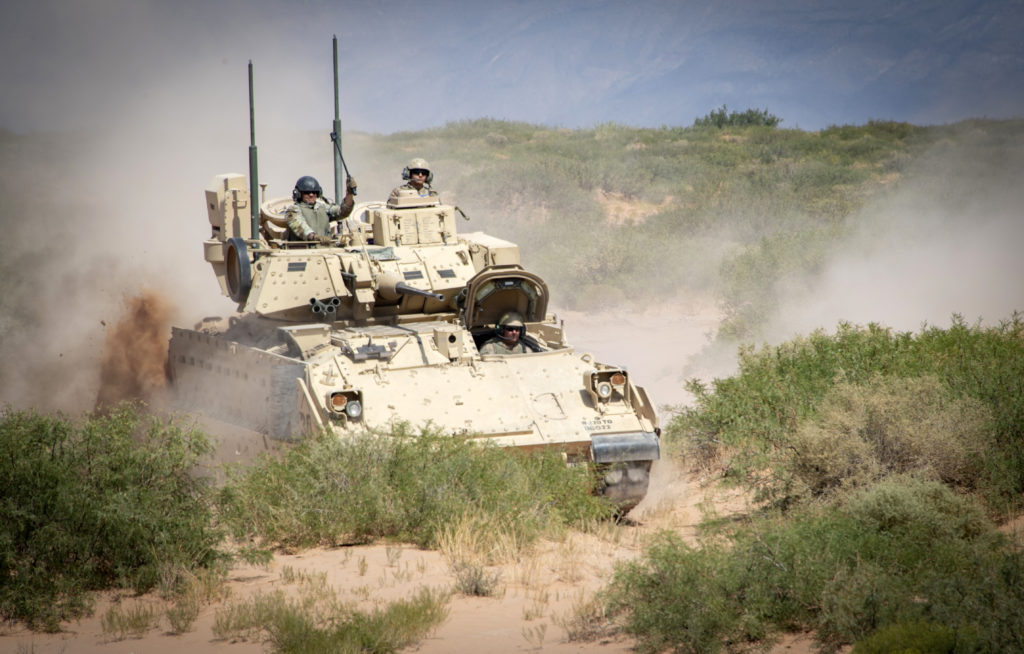
By Sgt. 1st Class Leonel Rubio, Test and Evaluation NCO, Aviation Test Directorate, U.S. Army Operational Test Command
FORT BLISS, Texas — Tactical Unmanned Aerial System (TUAS) operators from the 1st Armored Division (1AD) are wrapping up operational testing of the new RQ–7B Shadow Block III system here while exploiting their operational skills.
Operators flew 94 missions and over 400 flight hours under realistic battlefield conditions.
According to Mr. James Adams, TUAS Follow-on Test (FOT) Test Officer, with the Fort Hood, Texas-based Aviation Test Directorate (AVTD), U.S. Army Operational Test Command, upgrades are designed to increase the reliability and availability of the Shadow on the battlefield.
Adams and his team worked with Shadow operators from 3rd Squadron, 6th Cavalry Regiment, 1st Armored Division and ground troops from Headquarters and Headquarters Company, 1st Battalion, 37th Armor Regiment, 1st Armored Division to exercise the capabilities of the Block III across the wide Fort Bliss desert terrain.
The Block III Shadow improves upon the Army’s version 2 (V2) systems, with a more capable payload sensor, improved engine, weatherization package, and an upgraded avionics package which includes Voice over Internet Protocol (VoIP) Communications and upgraded Levels of Interoperability (LOI) functionality.
“The test unit has stated that the Shadow Block III upgrades to the payload and communication systems, set this system ahead of the V2,” Adams said.
He explained how communications and interoperability upgrades such as VoIP, Blue force Tracker (BFT) II and LOI functionality will increase the synergistic effects of shadow operations with Attack helicopters and the one system remote video terminal (OSRVT) equipped ground forces.
1AD conducted area surveillance, reconnaissance, calls for fire, target lazing and designation for the AH–64D and AH–64E Apache helicopters, as well as other reconnaissance and intelligence gathering operations.
“Assets from the 1–37 AR — such as the Bradley Fighting Vehicles, mortar-equipped Armored Personnel Carriers and HMMVVs — enabled the test team to present realistic targets that simulated near peer capabilities for operators to track and report to higher headquarters,” said Adams.
A data collection team led by Dr. Allison Hedrick, AVTD’s Lead Operations Research Systems Analyst (ORSA), used instrumentation, post-mission surveys, and after action reviews to provide Army evaluators the data required to assess the capability of the Block III system.
“The data collected during the test will support an independent evaluation by the United States Army Evaluation Center,” she said.
Besides getting at the data required for testing, FOT operations greatly enhanced unit readiness and helped progress newly-assigned Soldiers to Readiness Level 1 (RL1) during training before the test began.
“New equipment training, collective training and operational testing enabled C Troop to focus on several critical areas, including mission planning, and launch and recovery operations; improving its overall mission readiness while meeting operational test requirements,” Adams said.
According to Squadron Commander, Lt. Col. Michael H. Gourgues, taking part in testing at his unit’s home station allowed the application of key expertise and resources, provided by the test team, while flying in its routine training environment.
“It would have taken me six months of training to achieve the current level of readiness,” Gourgues said.
~~
About the U.S. Army Operational Test Command:
As the Army’s only independent operational tester, OTC tests Army, joint, and multi-service warfighting systems in realistic operational environments, using typical Soldiers to determine whether the systems are effective, suitable, and survivable. OTC is required by public law to test major systems before they are fielded to its ultimate customer — the American Soldier.
The Aviation Test Directorate at West Fort Hood, Texas, plans and conducts operational tests and reports on manned and unmanned aviation-related equipment to include attack, reconnaissance, cargo and lift helicopters, fixed wing aircraft, tactical trainers, ground support equipment, and aviation countermeasure systems.


